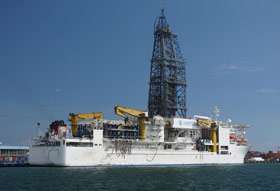A new study about the 2011 Japan tsunami in the internationally respected journal Science has implications for New Zealand, says a University of Otago scientist who
A new study about the 2011 Japan tsunami in the internationally respected journal Science has implications for New Zealand, says a University of Otago scientist who contributed to the study, Dr Virginia Toy.
The major finding confirmed by the analyses reported in the paper, published today, is that the massive 2011 earthquake in Japan released nearly all of the stress that had built up along the plate boundary in that region.
Researchers had suspected that this release happened to some degree, based on observations that the sea floor moved nearly 50 meters during the earthquake.
To test the hypothesis the study authors, led by Weiren Lin from the Kochi Institute for Core Sample Research in Japan, analysed fracture orientations they could see in "resistivity images" from three large boreholes drilled into the crust across the plate interface where the earthquake occurred.
The team obtained their material from an expedition last year in which Dr Toy, from Otago's Department of Geology, travelled on the drilling vessel Chikyu as part of JFAST, the Japan Trench Fast Drilling Project.
Dr Toy was a representative of an Australia-New Zealand International Ocean Drilling Consortium (IODP) consortium called ANZIC – a group made up of universities and research institutions from both nations.
This project aimed to drill into the subduction fault that slipped in May 2011, generating a magnitude 9 earthquake, and the huge seafloor displacement that caused a tsunami wave that devastated the Sendai coast.
Dr Toy says the scientific aim was to sample the fault materials and make measurements related to the frictional strength of the fault surface, to help understand why there was such a large displacement.
She says the resulting study in Science has found that there was near total release of stress (i.e. pressure, or force, resulting from tectonic plate motions) in the crust in the wedge materials above the fault plane when the 2011 earthquake in Japan occurred.
"This is significant because most earthquake faults only release a small portion (typically 10%) of the stress in the crust around them, not nearly 100% as in this case," she says.
"Also, such a high proportion of stress was probably released because the fault materials were particularly frictionally weak or slippery."
She adds that the results suggest that subduction zone faults in other locations, including around New Zealand, need to be more carefully examined. New Zealand has "so much of its coastline exposed to the Pacific Ocean, which is ringed by subduction zones, for example in Tonga-Kermadec, Hikurangi and Chile."
"If the materials in the fault planes are similar to those in the Japan Trench, it is likely they will also be very frictionally weak and therefore that we can also expect very large seafloor displacements when they slip,"
"It means that we should be prepared for other similar subduction zones to generate very large tsunami."
View the paper abstract via the Science website.
Journal information: Science
Provided by University of Otago






















